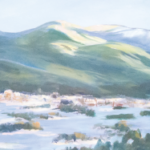In their extraordinary work, the discoverers of TNF (or cachectin) were pursuing fundamental questions, and they did not have rheumatoid arthritis (RA) on their radar screens. In the chaos and jumble of scientific inquiry, however, investigators eventually saw a connection with RA, allowing anti-TNF (after a detour in sepsis) to find a place in clinic where today it is a mainstay in a treatment paradigm that is making remission increasingly possible. That, dear readers, is what scientific advance is all about. Without a long gestation period of heavy duty basic research—protein purification, sequencing, expression cloning, development of functional assays, shooting up mice—the role of TNF in the pathogenesis of inflammatory arthritis likely would have been missed. It was only later when a treasure chest of basic science observations had been filled to the brim that a translational conversation could begin. Most importantly, the individuals pursuing this initial work made progress because they could speak both clinical and basic research languages, making translation possible. Look at the early publications of these investigators. They are replete with top-flight basic science. Without the ability of these pioneers to zig and zag between the clinic and the lab, anti-TNF would likely have been shelved long ago.
Becoming Bilingual
Time was, students in the United States had to take a foreign language to graduate from high school or college. Belief was strong that a truly educated person should know two languages and, by implication, two cultures. (Did you think my adeptness with dropping bon mots and navigating the boîtes on the Left Bank came out of thin air? No, mes amis, it was four years of high school French, disciplined by teachers we called Monsieur and Madame who, sacré bleu, made us conjugate verbs incessantly—Je suis, tu es, il est—working us so hard my derrière turned into rien de tout, and then we had to read Le Malade Imaginaire, La Peste, and Le Père Goriot in French in paperback books whose pages I had to slit apart with a silver letter opener.)
To you trainees who want to do translational research, I want you to look deep into your souls and ask yourself a serious question: “Do I know two languages? Do I know science as well as medicine?” If the answer is no, then I say that you should come to the lab for a good long stay. Get a few feet of bench space and a computer with lots of memory. Learn what a mole is, how to make a buffer of pH 7.4, and how to take that flow cytometer for a spin. Make PubMed your friend, and start reading articles. Unlike journal club, no skipping the “Materials and Methods,” because this section often contains the key nuggets for translation.

